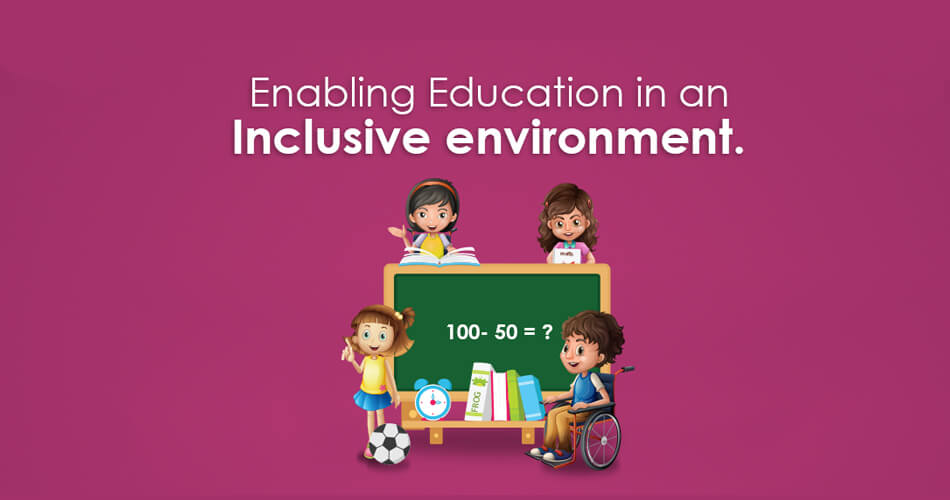
Inclusive Education is gaining ground in a typical classroom setting. This is due to the evolved and universal understanding that each child, irrespective of special needs, language, race or religion has the basic right to education. Classrooms that uphold Inclusive Education nurtures an environment that develops a diverse group of students, by imparting knowledge that is aligned with their assimilative capability. The system provides a leeway for students with special needs, as they are encouraged to join the general school system. This opportunity allows them to gain equal quality and facility. The government of India has been actively involved in integrating Inclusive Education. One of the schemes launched by the government aims at enabling students with special needs to pursue education in and inclusive and enabling environment.
Inclusive Education values diversity as well as the unique contributions that each child brings into the classroom, and Ms. Namrata Rawat has taken a seemingly small yet extremely effectual step in incorporating this purpose. Ms. Rawat observed the magnitude of a multi-cultural and multi-lingual mix of students in her classroom. She encountered a situation wherein one of her students narrated in his native language and the others laughed due to their inability to comprehend it. This incident motivated her to learn songs in various languages and sing them during circle time, which intrigued her students motivating them to learn these songs. This opened students’ minds towards accepting the culture and linguistic diversity, enabling Ms. Rawat to create a classroom that she had envisioned.
Inclusive Education for children with special needs has been a concern since time immemorial. Although the government has been taking active steps in this regard, Prasannta Kohli Arora who runs a special school and child development clinic, questions the inclusivity provided for these children. She strongly believes that children with special needs need to be loved and supported through all their endeavors. Teachers need to work industriously with them, providing them with an opportunity to get adapted to the mainstream classroom framework.
Ms. Arora shares the following tips that can be incorporated into the teaching process to make them inclusive with the world:
- Students who are differently-abled need to be given special attention only in the medical front
- Educators need to incorporate innovative ways to help them grasp new concepts. This can be done by way of flashcards, games, stories and other audio-visual methods.
- Make use of positive and negative reinforcements, in order to bring about a difference
- Use the three-step approach that includes observing, teaching and experiencing. It is imperative to show them the visuals of the concept then teach the concept, and follow it with a sensory activity that reinforces the concept.
- Speak to them in an age-appropriate manner and avoid baby language
- Handle them with empathy instead of sympathy and be assertive towards them and every situation that pertains to them.
We as educators need to be considerate towards students irrespective of their special needs, race, religion, and language. Inclusive Education as we understand does not only mean embracing a diverse set of students in a classroom but also deciphering new perspectives by which students with differentiated-ability can learn new concepts effectively.





well documented the importance.